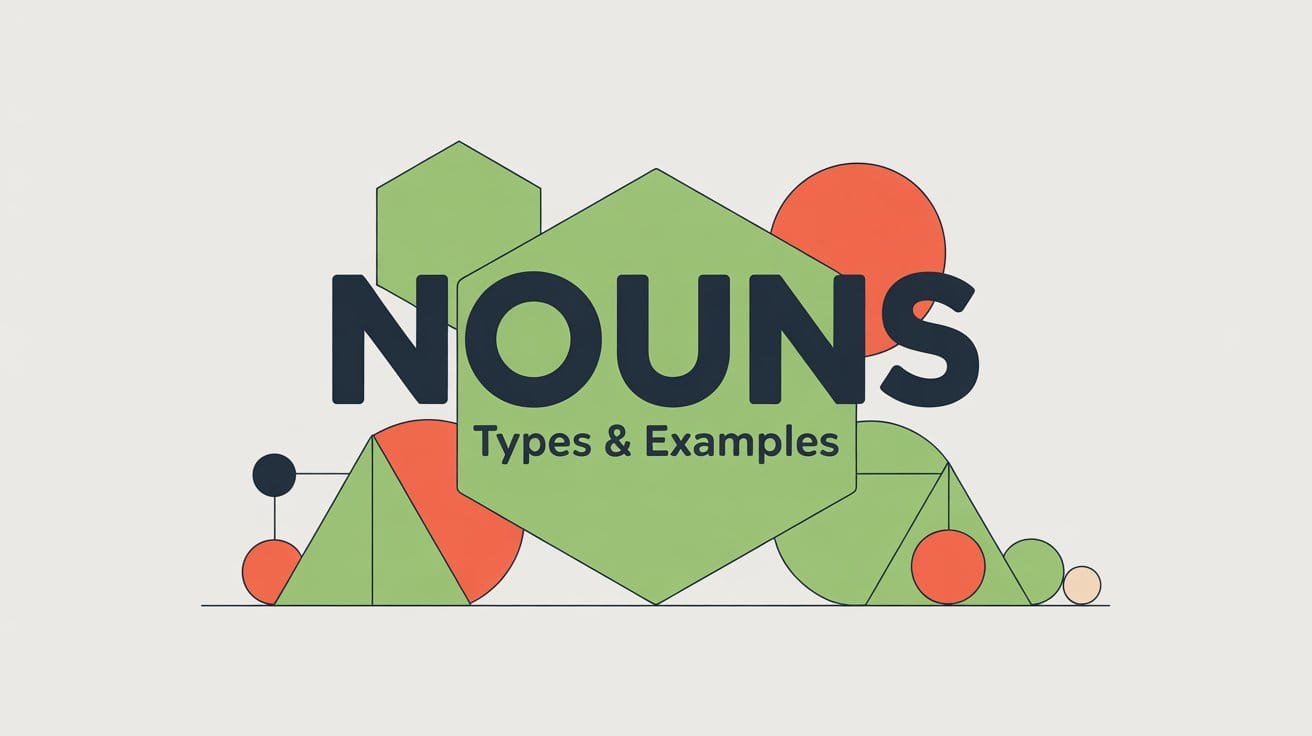When you mention a specific name, like Emma, India, or The Eiffel Tower, you’re using a proper noun. These nouns point to one-of-a-kind people, places, or things and always begin with a capital letter.
In this guide, you’ll learn what proper nouns are, how they’re different from common nouns, and how to use them correctly in everyday writing and speech.
What Is a Proper Noun?
A proper noun is the specific name of a person, place, thing, or idea. Unlike common nouns, which refer to general categories, proper nouns name something unique. Because of this, they are always capitalized, no matter where they appear in a sentence.
Proper nouns include personal names, countries, company names, historical events, days of the week, and more. These names help us talk about something exact, not just a general kind. Instead of saying a country, we say Japan. Instead of a book, we say The Little Prince. That extra detail helps listeners and readers know exactly what or who we mean.
Characteristics of Proper Nouns
Proper nouns are easy to recognize once you know what sets them apart. Here are the main characteristics:
They name something specific
Proper nouns refer to one particular person, place, or thing.
Example: Instead of saying river, you say Amazon River.
They are always capitalized
Whether they appear at the beginning, middle, or end of a sentence, proper nouns always start with a capital letter.
Example: My favorite writer is J.K. Rowling.
They include names, titles, and more
Proper nouns can be names of:
- People: Peter, Dr. Mehta
- Places: New York, India, Mount Everest
- Brands: Samsung, Nike, Pepsi
- Holidays: Christmas, Diwali
- Titles: The Great Gatsby, Harry Potter and the Sorcerer’s Stone
Proper Noun Examples
Proper nouns appear everywhere in daily language. They help identify specific names rather than general categories. Here are some examples grouped by type:
- Names of People: Robert, Jessica, Mr. Khan, Dr. Meera Kapoor
- Places: India, London, Mount Fuji, Nile River
- Brands and Organizations: Apple, Toyota, Netflix, World Health Organization
- Days and Months: Monday, Thursday, January, October
- Books, Movies, and Titles: The Hobbit, Titanic, A Brief History of Time
In a sentence:
On Friday, Riya visited the British Museum in London.
Each capitalized word is a proper noun because it names something specific.
Difference Between Proper Nouns and Common Nouns
The main difference between a proper noun and a common noun is specificity. A common noun refers to a general item or idea, while a proper noun names something specific and unique.
| Common Noun | Proper Noun |
|---|---|
| mountain | Mount Everest |
| country | Canada |
| teacher | Mr. Ali |
| movie | Inception |
| river | Nile River |
Sentence Example
- Common noun: We watched a movie last night.
- Proper noun: We watched Inception last night.
Proper nouns always begin with a capital letter, while common nouns only do if they appear at the start of a sentence.
How to Use Proper Nouns Correctly
Using proper nouns is mostly about capitalization and context. Since proper nouns name specific people, places, or things, they always begin with a capital letter.
Capitalize Proper Nouns Everywhere
It doesn’t matter where they appear in a sentence—they must start with a capital letter.
Example: We visited Agra to see the Taj Mahal.
Avoid Capitalizing Common Nouns
Don’t capitalize a noun unless it’s a specific name.
Correct: The teacher assigned a book by George Orwell.
Incorrect: The Teacher assigned a book by George Orwell.
Be Careful with Multi-Word Proper Nouns
Capitalize each main word in titles, names, or official places.
Example: The Prime Minister visited the Statue of Liberty.
Don’t Confuse Descriptions with Names
Only the specific name is capitalized.
Example:
✔ We toured Lake Victoria.
✖ We toured the Lake.
Using Articles with Proper Nouns
In general, proper nouns refer to specific names, so they don’t usually need articles like a, an, or the. However, there are a few clear exceptions where using an article is grammatically correct—and even necessary.
When to Use “the” with Proper Nouns
1. When the proper noun includes a common noun as part of the name
Many famous names contain a regular noun like river, mountain, or building. In these cases, “the” is used before the name.
Examples:
- The Amazon River
- The Statue of Liberty
- The Great Wall of China
- The Pacific Ocean
- The Sahara Desert
Here, river, statue, wall, ocean, and desert are common nouns. Even though they’re part of a proper noun, the article the is still used.
2. With countries and organizations that include common nouns
If a country’s or organization’s name contains words like republic, kingdom, states, or union, you’ll need “the.”
Examples:
- *The United States
- *The United Kingdom
- *The Republic of Korea
- *The European Union
- The World Health Organization
The article helps identify the full, formal title of these entities.
3. With famous structures, hotels, newspapers, and groups
Many well-known places and entities always take “the” as part of their proper name.
Examples:
- The Taj Mahal
- The Hilton Hotel
- The Times of India
- The Rolling Stones
- The Red Cross
When Not to Use Articles with Proper Nouns
1. With most personal names
Never use the before names of individual people.
Examples:
- ✔ Ravi is my classmate.
- ✖ The Ravi is my classmate.
2. With most city and country names
If the name is just the name, without descriptive words like kingdom or republic, don’t use the.
Examples:
- ✔ I live in Mumbai.
- ✖ I live in the Mumbai.
- ✔ She is from Japan.
- ✖ She is from the Japan.
Exceptions (where “the” is needed):
- The Netherlands
- The Philippines
These country names are plural or historically include the as part of the usage.
Quick Tip to Remember
Use “the” with:
- Descriptive names (The Grand Canyon)
- Formal organizations (The United Nations)
- Landforms and water bodies (The Himalayas, The Ganges)
- Groups and institutions (The Beatles, The Ritz)
Don’t use “the” with:
- First names or surnames (Amit, Jackson)
- Most countries (India, Brazil)
- Cities (Paris, Delhi)
- Languages (English, Spanish)
FAQs About Proper Nouns
Is “sun” a proper noun?
No. Sun is a common noun because it refers to the general star at the center of our solar system. If you use The Sun as part of a publication title, then it becomes a proper noun.
Are months and days proper nouns?
Yes. Names of days (Monday, Friday) and months (June, December) are proper nouns and should always be capitalized.
Why is capitalization important in proper nouns?
Capitalization shows that a noun refers to something specific. It helps readers recognize names, titles, and brands clearly, and it’s also a basic rule of standard English grammar.
Can a proper noun be more than one word?
Yes. Many proper nouns include multiple words, such as New York City, The Lord of the Rings, or Indian Institute of Technology. Each main word in a multi-word proper noun should be capitalized.



